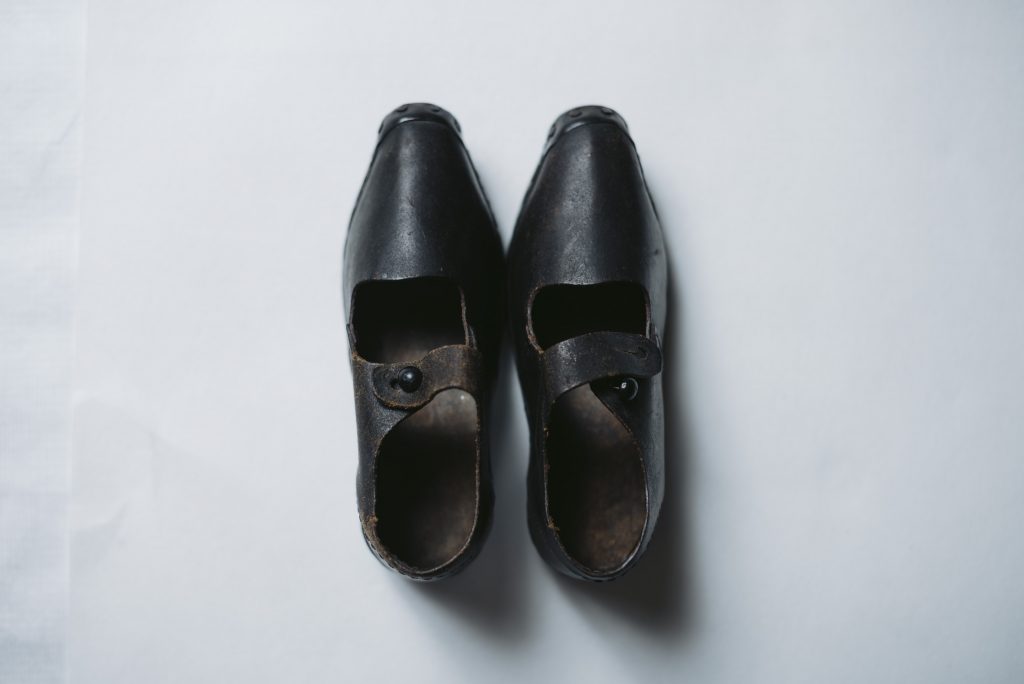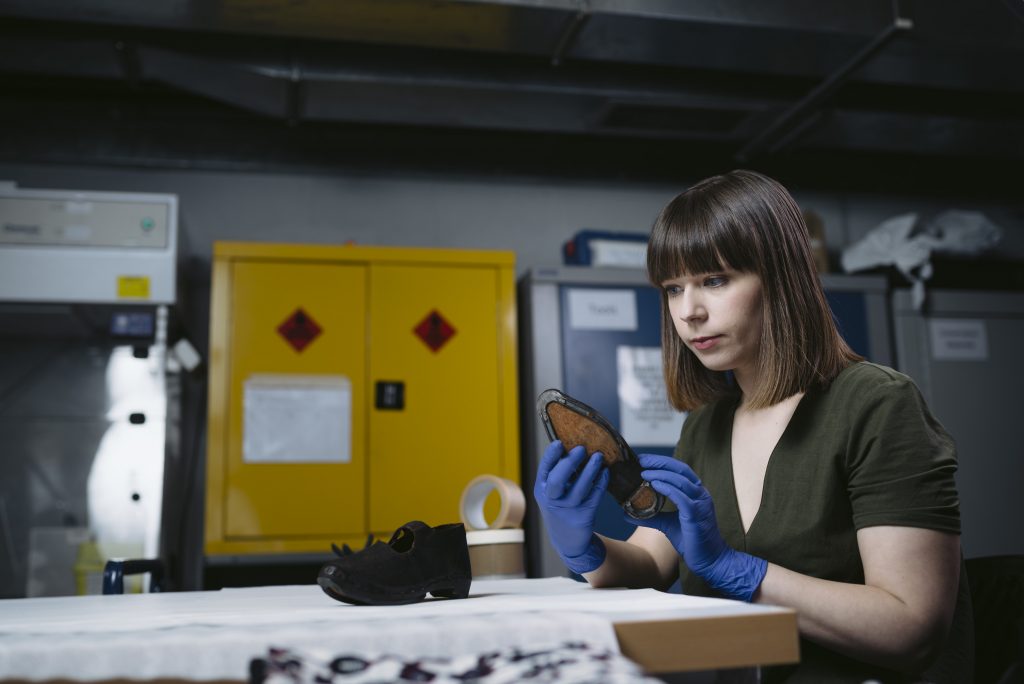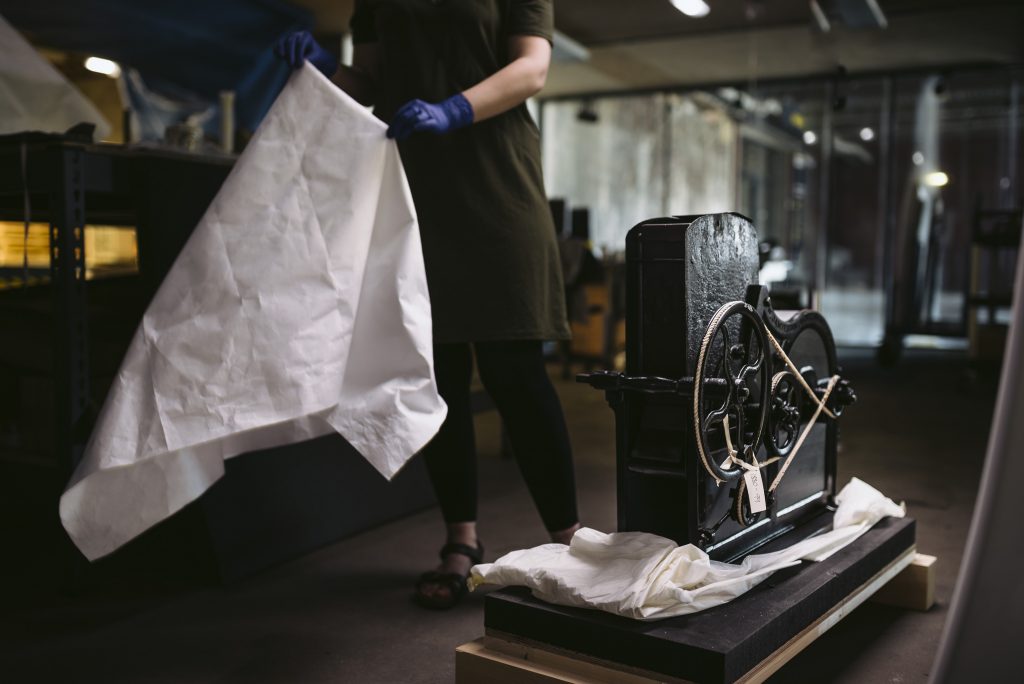
Practical and hardwearing, clogs were the work-a-day shoe of industrial Manchester’s women, children and men. What is unusual about this pair is that the children who wore them never owned them. They were lent by Charter Street Ragged School in Angel Meadow to children whose families could not afford to buy shoes. They are stamped ‘CSRS loaned, not to be pawned’, to stop poor children or their families pawning them for money.


The clogs were selected for the gallery to show the precarious lives of industrial Manchester’s workforce.
Workers could earn good wages in Manchester’s textile mills, but work was never guaranteed. Cotton shortages or low demand for cloth could shut the mills. Workers then had to go without wages. Many struggled to afford food, clothes and a place to live. So called ‘ragged’ schools like Charter Street in Angel Meadow, by the middle of the 19th century one of Manchester’s worst slum districts, provided food, clothing and basic education to Manchester’s poorest people.

Other new items added in to the gallery include a cotton gin that tells part of the devastating story of slavery and a host of colourful shipper’s tickets featuring exotic and unusual designs.
The gallery will paint a vivid picture of how cotton transformed Manchester into a city like nothing the world had ever seen before, populated by ingenious makers and determined profit seekers, spinning and weaving cloth to sell around the globe. In this sprawling, swarming, rain-soaked city of extreme wealth and poverty, the cotton industry reshaped the lives of Manchester people, creating a new kind of urban community.
As well as the new items, much-loved objects from the gallery’s current form, such as Richard Arkwright’s incredible Water Frame that revolutionised cotton production, will be redisplayed in a way that will increase visitors’ enjoyment, and the ever-popular Explainer shows among the working mill machinery have been updated to give an even deeper and more exciting insight into the birth of the industrial revolution.
I have a couple of questions to ask, please;
1) Was angel Meadows regarded as part of Ancoats?
2) In 1870 which you state is when the child’s clogs were made, how much would a pair have cost? What was man’s and woman’s weekly wage? Looking at census returns were there any clog makers located in Ancoats?
3) The first building of Charter Street Ragged School, which was built about 1850 and proved too amsll and was rebuilt in the 1880s or 90s was designed by the architect William Hayley, who was the architect for several Commissioner churhces in Lancashire, includinh All Souls, Every Street, Ancoats and had a hand in St. Paul’s, Withingotn. did he have offices in Manchester ad what other buildings did he do?
My mother Joan Smith nee Higton was a textile designer over a period of over 40 years from about 1936. She worked for at least 3 Belgium companies before finally working for Total, Broadhurst Leigh. I have some of her original designs covering African, Javaese and home trade textiles. Would you be interested in having these for your archives. She designed the textiles for the actress Carman Miranda’s dress who appeared in I understand a film with an African connection.
Regards, Roderick Smith.
I find the printed information very interesting. I married a Hebden in Australia, his grandfather came from Oldham near Manchester by working his passage on a ship called The Drumlarig in 1867. I believe his ancestors were linen spinners from Hebden Bridge? Regards Marleene Hebden from Melbourne Australia I am. 83 years of age my husband John is now 90 .